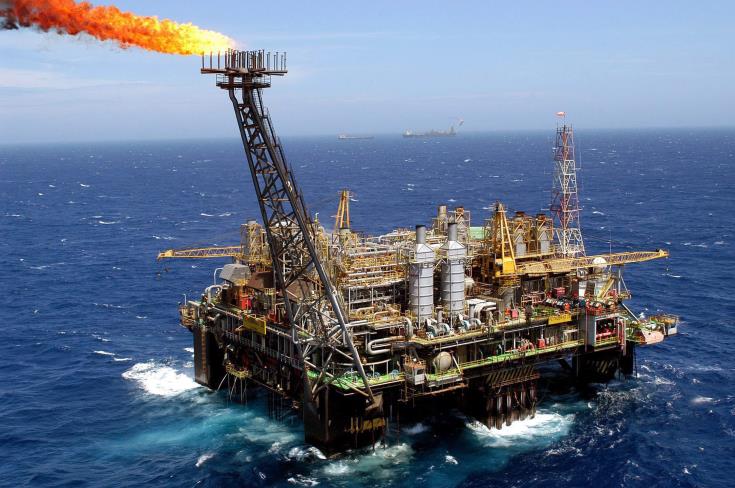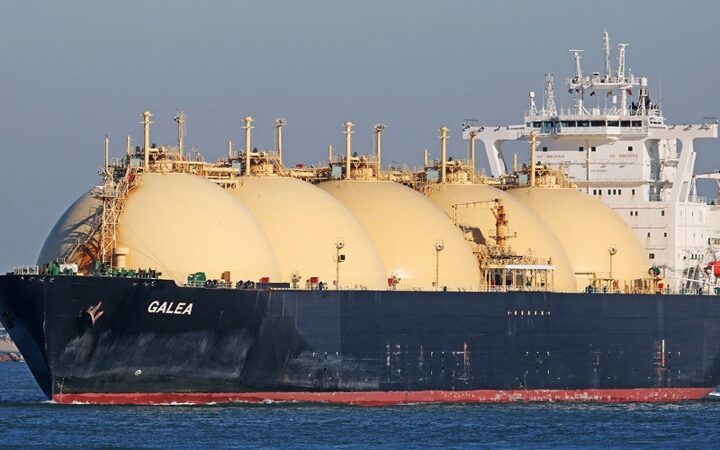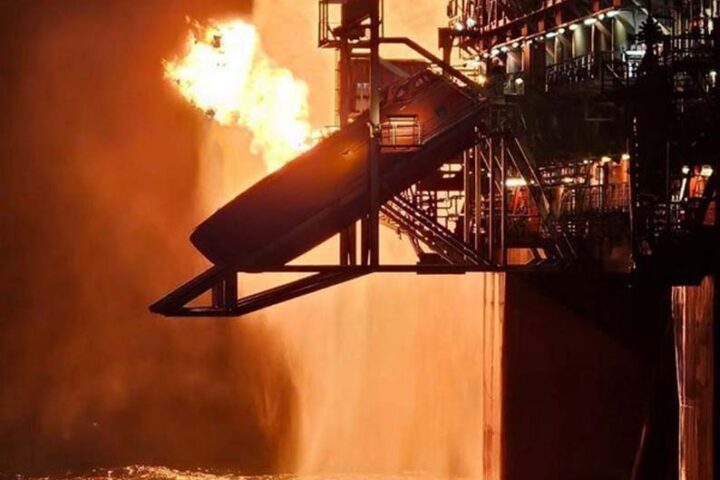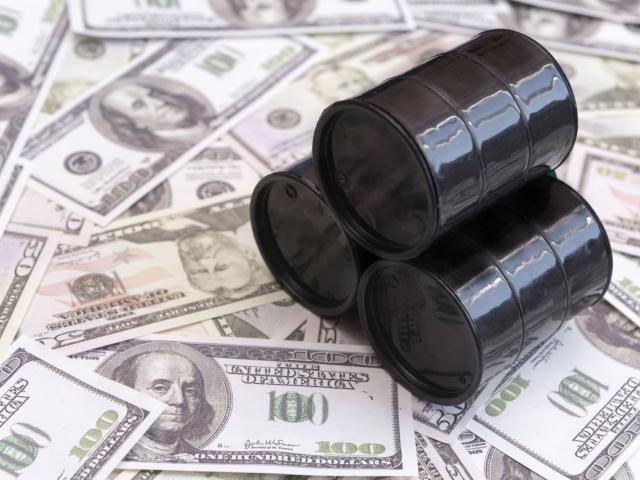Natural gas demand growth remaining strong across Asia, continuing to keep global balances tight.
A study by Woodmac shows that Asia’s LNG demand will double by 2050 to 510 mtpa/yr.
“LNG demand always surprises to the upside”, said Jerome Milongo, with BP LNG Trading, and after a period of high prices, there’s now a “reversion to the mean” and lower prices will bring on more demand.
India’s natural gas demand is set to soar, tripling by 2050 to 23.2 Bcf/d, driven by industrial growth in refining and fertilisers. With limited domestic output, LNG imports will play a critical role.
Japan wants to set realistic targets. It says fossil fuels will make up to 40% of its power mix in 2040 – basically the same as its 2030 goal.
Gazprom has hit maximum capacity of pipeline gas flows to China. It has now reached 38 billion cubic metres annually.
Egypt’s prime minister Madbouly expects resumption at the Zohr gasfield operations will boost the country’s gas production by mid-2025. He admitted that payment delays had led earlier to a halt in further investment in the field.
Nevertheless, Egypt is in talks with US and other companies to purchase long-term volumes of LNG as energy demand soars.
Europe in the cold
Europe is set for the coldest winter since Russia’s invasion of Ukraine, pushing up energy costs as the continent dips into its gas reserves at a faster-than-usual rate.
A long period of cloudy and colder weather, low wind speeds and low sunshine reduced renewable electricity in northwestern Europe, and led to a much higher use of natural gas for power generation, up 43% in November 2024 compared to a year earlier, at a time when gas demand is also high in south-east Asia.
Germany’s weak winds in October and November triggered a record surge in gas-fired power generation. Gas-fired electricity production jumped by a record 79% in November from October. Long-term intermittency is still a problem.
This has led to an accelerated withdrawal for gas from storage -the fastest since 2016 – with the expectation that Europe will draw heavily on its gas storage during the current winter.
In fact, gas storage levels are depleting at an alarming rate. As a result, gas prices rose as did electricity prices.
Gas for delivery next summer is now being priced at a record premium, exacerbated by worries about how Europe will manage to fill storage in summer 2025.
To make things more difficult for European gas, on November 21 the US applied sanctions on Gazprombank which receives payments for natural gas from Gazprom’s customers in Europe. This will make trading of Russian gas in Europe much more difficult.
In addition, as of 1 January 2025, a major contract governing the transit of Russian gas through Ukraine will end.
And, to compound Europe’s gas problems, Gazprom stopped gas supplies to Austria’s OMV, after OMV seized Russian gas as payment to cover the value of an arbitration award.
OMV had been buying Russian gas since 1968, but it is now seeking ways to completely exit Russian gas purchases despite its contracts with Gazprom running until 2040.
Gas prices at the TTF gas trading hub increased to €47/MWh, the highest for a year. Back in March the price was €22/MWh.
Bank of America says European gas prices are set to average €40/MWh next year, with risks of spikes to €70/MWh on tight supply and EU storage requirements.
Europe is boosting LNG imports amid cold winter forecasts and the end of the Russia-Ukraine gas deal. US LNG supply competition with Asia is also heating up.
As regards the future of Russian gas to Europe, Steve Hill now with Mercuria says this is, “probably more of a ‘when and how much’ question than ‘if’.”
What is ironic is that as wind electricity production falters, Germany, having shut its last nuclear reactor in 2023, is now being forced to import electricity from France that uses nuclear to generate it.
The disintegration of Germany’s coalition government, a lack of funding, and growing opposition to the policy is pointing to an early demise for the country’s carbon contracts for difference (CCfD) scheme.
The incoming European Commission is being warned to refrain from re-opening existing climate legislation in the next five years in order to avoid sowing political chaos and uncertainty.
Columbia Energy says European policy leaders are well aware that Europe’s industrial base has been decimated, but the response always seems to be just more regulations. “There is now pancake after pancake of regulations!” it said.
The European central bank warned that low growth and high debt risk seeing another Eurozone crisis.
Eurozone manufacturers reported business conditions worsened again in November as the region struggled with high energy prices and poor business investment and consumer spending.
Anthony Gooch Gálvez, secretary general of the European Round Table for Industry, warned that, “de-industrialisation is a reality, and de-Europeanisation is part of that equation”.
Poland is putting energy security on top of the next EU presidency agenda, sidelining climate.
Jakub Jaworowski, Polish minister of state assets, said energy security means “ensuring there are stable energy sources working in the system,” which “are still often fuelled by fossil fuels”.
US natgas exports at record-high
US LNG exports hit near-record highs at 14.6 bcf/day, driven by easing plant outages and rising global demand.
US demand for electricity will surge almost 16% over the next five years, more than triple the estimate from a year ago, driven by new data centres and factories that are going to suck up power.
Rystadenergy said that triggered by US President-elect Donald Trump, the next four years could prime the US LNG markets for a golden era.
Trump is preparing a wide-ranging energy plan to boost gas exports and oil drilling. It will approve export permits for new LNG projects and increase oil drilling off the US coast and on federal lands.
Trump’s incoming energy secretary nominee, Chris Wright, has said “there is no climate crisis and we are not in the midst of an energy transition either”.
China to lead climate initiatives
China’s role at the COP29 climate talks, which concluded on November 24 in Baku, was “markedly different to previous years”, with its negotiators being “unusually cooperative”.
Chinese officials moved to soothe angry delegations from India, Saudi Arabia, Africa and the “small islands group” during the tense final plenary, warning them in one-on-one conversations in the final hours that things would be worse without a COP29 finance agreement.
China’s COP29 head, Zhao Yingmin, said that China will be “the backbone of the global response to climate change”.
China’s coal use hit a record high in 2024, yet its share of power generation dipped below 60% for the first time this year. Rising electricity demand and seasonal factors keep coal dominant despite renewable gains.
In a recent survey, 44% of experts said China’s CO2 emissions have peaked or will do so in 2025. This reflects rising optimism about the country’s green transition as it takes a leading position on climate action.
Construction of the China-Russia east-route natural gas pipeline is complete. Once fully operational, the pipeline will supply 38 bcm of natural gas per year to northeast China.
On the economic front, China signaled loosened monetary policy next year to spur growth. Xi Jinping says China will remain the world’s ‘growth engine’. This has helped steady the price of oil.
Climate finance back on the table
COP29 called on “all actors” to work to enable climate finance of at least $1.3 trln by 2035. This can be achieved only by catalysing a vast increase in private-sector investment and it could make a difference.
Renewable intermittency is impacting the UK’s power supply. The electricity transmission system has had to rely on gas to supply around 45% of generation in November, as colder-than-normal temperatures sent demand surging while slow wind speeds have trimmed wind farm output.
The IEA says that small modular reactors – a promising nuclear technology still under development – could offer reduced costs and faster construction compared to present-day nuclear power plants.
Finally, an article in the FT warned that the public doesn’t buy the idea of a ‘green jobs’ bonanza. The public never found this tale as compelling as politicians seem to think. People understand that transitions are hard — politicians need to as well.
Dr Charles Ellinas is Councilor at the Atlantic Council







